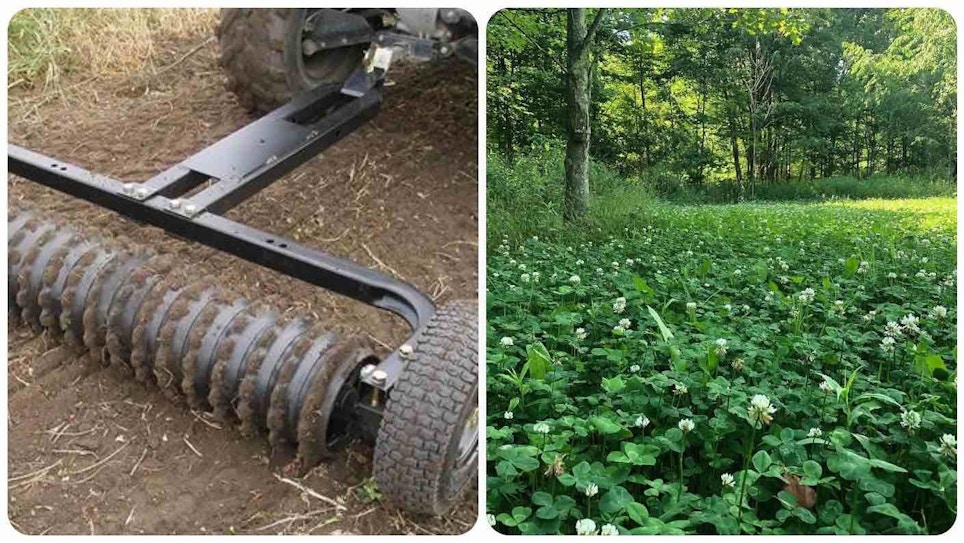Spend any time at all watching DIY land managers on YouTube and you’ll see expert after expert touting the benefits of using a cultipacker when planting food plots. Cultipacking ensures proper seeding depth and good seed-to-soil contact.
Let’s back up a minute: What’s a cultipacker? It’s a heavy iron roller with cleats that you roll over the soil. You pull it behind an ATV, side by side, or tractor. This step is usually performed after a field has been disked. The cleats grab the soil and help the cultipacker rotate. The implement’s weight helps flatten and firm the soil evenly.
When planting small seeds such as brassica and clover in food plots, many experts recommend using a cultipacker prior to broadcasting seed, then cultipacking again after planting to ensure good seed-to-soil contact.
If you already own a cultipacker — great. There’s no reason not to use it. A cultipacker works as advertised.
But what if you don’t own a cultipacker? Should you spend the money to purchase one?
Maybe.
The reason for my wishy-washy answer is it depends on the size of food plots you’re planting, and whether your food plot plan involves a tractor and disking.

If you disk food plots with a tractor, or disk your fields using some type of an ATV-attached implement, then a cultipacker is necessary before planting. You don’t want to broadcast small seeds such as brassica and clover on a disked field because many seeds will fall too deep into soil crevices. These small seeds grow best when covered by no more than a 1/4-inch of soil. If you disk first, it pays to roll a field with a cultipacker, broadcast seed, then roll the field again with a cultipacker.
Let’s assume, however, you don’t own a tractor and a disk, and you don’t disk your fields with some other ATV-attached implement. Do you need a cultipacker? Not really.
The reason is your ATV (or side by side) tires work just like a cultipacker when you drive over a food plot. Sure, a cultipacker pulled behind an ATV will get the job done faster because of its width, but if you have the time to drive back and forth over a field, the tires themselves will press the seed into the soil to ensure good seed-to-soil contact.
Obviously, this would be a time-consuming project on a larger food plot. For example, to plant clover on a 1-acre plot (think football field without end zones), I’d want a cultipacker. However, to plant a tiny plot, say 15 yards by 20 yards (about 1/16 of an acre), you can drive back and forth with an ATV and watch the tire tracks to ensure you’ve pressed all the soil. In my opinion, hauling a heavy cultipacker back into the woods for tiny food plots is more trouble than it’s worth.







